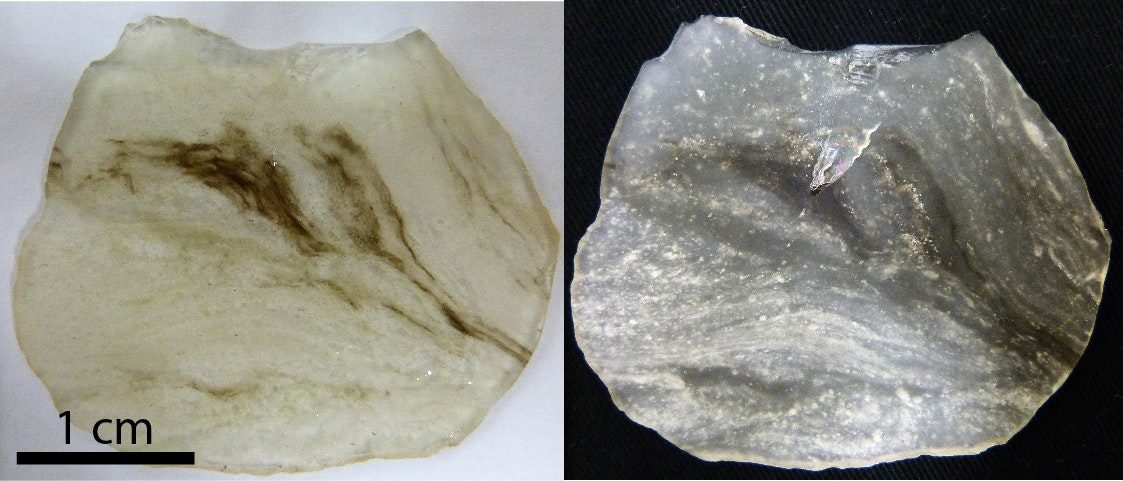
© Associated Press
In the remote desert of western Egypt, near the Libyan border, lie clues to an ancient cosmic cataclysm.
Libyan desert glass is the name given to fragments of canary-yellow glass found scattered over hundreds of kilometres, between giant shifting sand dunes.
Interest in Libyan desert glass goes back more than 3,000 years. Among items recovered from King Tut's burial chamber is a
gold and jewel-encrusted breastplate. In the centre sits a beautiful scarab beetle, carved from Libyan desert glass.
Libyan desert glass - raw and carved - is
easily available today, but how the glass formed has long puzzled scientists.
Our
research has found the answer.
The heat is onStudies show the Libyan desert glass formed about 29 million years ago. The glass is nearly pure silica, which requires temperatures above 1,600℃ to form, and that is hotter than any igneous rock on Earth.

© Aaron J CavosieOptical light images of a thin slice of Libyan desert glass.
But few mineral relics survived from whatever caused the melting. Within the glass are rare occurrences of high-temperature minerals, including a form of quartz called cristobalite.
There are also grains of the mineral zircon, although most have reacted to form a higher-temperature mineral called
zirconia.
Ideas about how the glass formed include melting during meteorite impact, or melting caused by an airburst from an asteroid or other object burning up high in Earth's atmosphere.
Despite many studies, definitive proof about which origin is correct has been elusive, until now.
One problem is that no impact crater from any object hitting the ground in the area has been identified as the source of the glass. Another was the lack of evidence of damage from high-pressure shock waves caused by any impact.
Evidence of impactOur research,
published in the journal Geology, reports the first evidence of high-pressure damage, showing the glass formed during a meteorite impact.Meteorite impacts and airbursts are both catastrophic events. Large meteorite impacts, such as the one that
killed the dinosaurs more than 65 million years ago, are rare.
But airbursts occur more frequently. An
airburst over Chelyabinsk, Russia, in 2013 caused extensive property damage and injured people.
The Chelyabinsk airburst
deposited 0.5 megatons of energy into the sky. Despite the damage, that event did not cause melting or shock damage.
In contrast, Libyan desert glass is thought by some to have been caused by a 100-megaton airburst, an event 200 times larger than the Russian airburst.The airburst idea arose from modelling atmospheric nuclear explosions.
Like a nuclear bomb, a large airburst deposits energy into the atmosphere that can melt surface materials. And an airburst does not leave a crater.


Earth Catastrophe Cycle | SOLAR MICRONOVA III - YouTube
[Link]
Episodes from the Apollo landings that I have never seen.